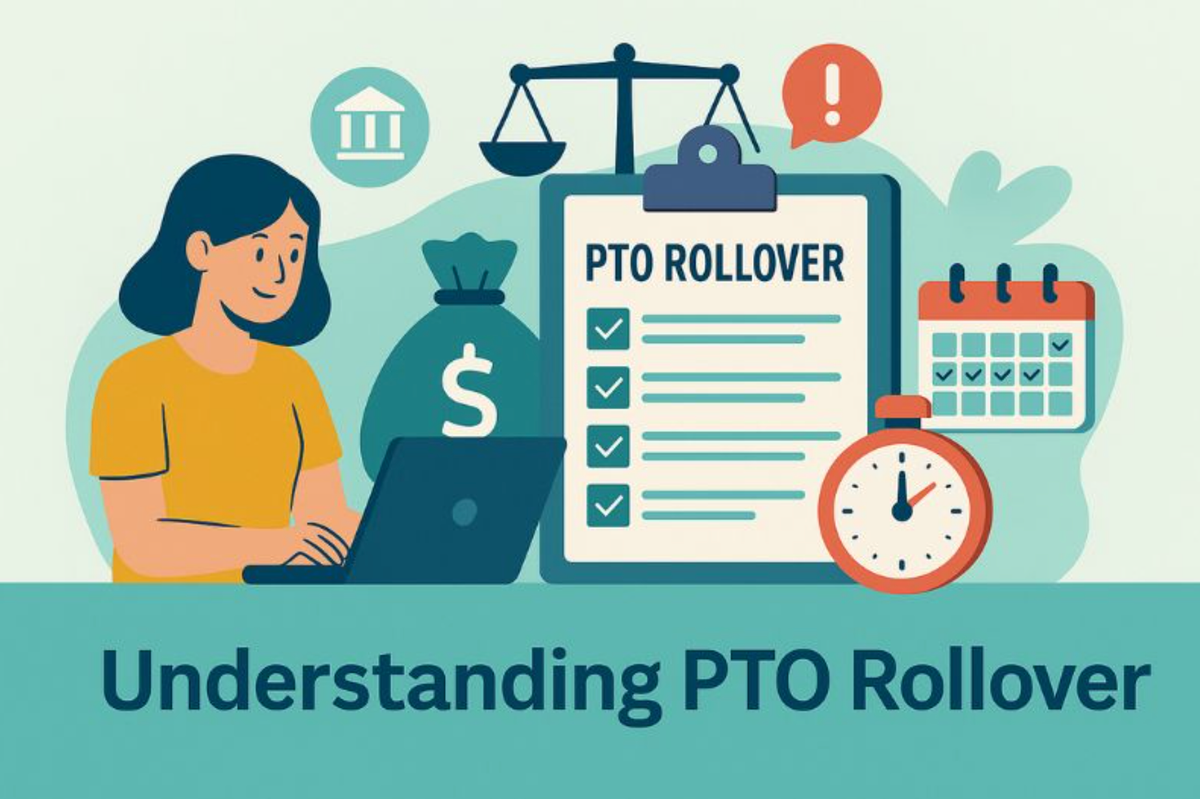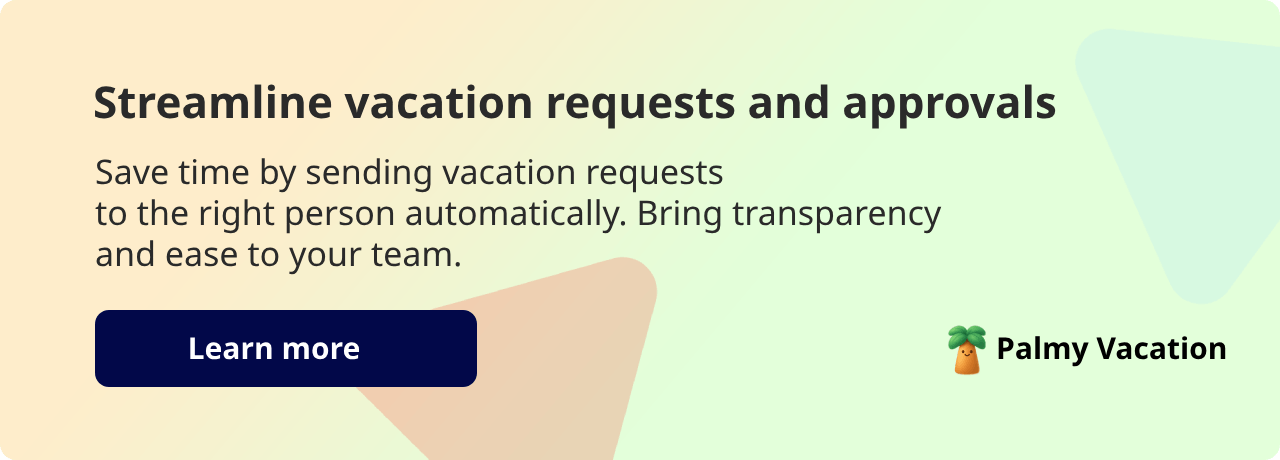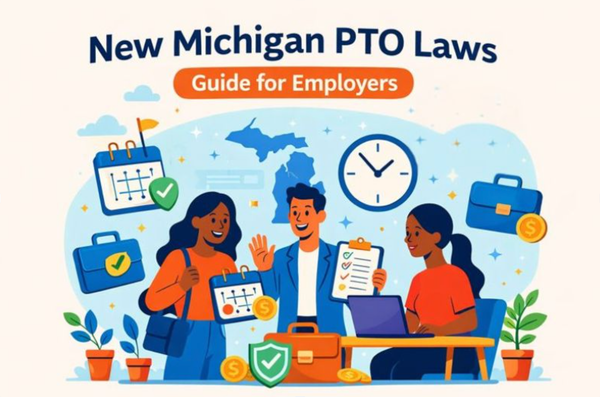Understanding PTO Rollover: Key Insights for Employers
Learn how PTO rollover policies work, their legal implications, and best practices for employers in 2025 with employee engagement specialist, BuddiesHR.


Paid time off (PTO) is about so much more than workplace perks - for employers, it's a strategic advantage that attracts and retains key talent in your industry.
Yet, there is one challenge that every employer grapples with, and that is: unused PTO and what to do with it.
Best practices suggest that you need a clearly defined PTO policy, alongside a powerful vacation tracker, to manage this process effectively and remove all confusion, making it a pleasure for both employers and employees. Let’s help you with that.
Types of PTO rollover policies
In most states, PTO carryover is at the discretion of the employer because it's considered a form of wages, but if you do offer this benefit, you are required to document this clearly in your PTO policies. Mainly, there are three types of PTO rollover that companies allow.
1. Unlimited rollover
Under this type of rollover, employees can carry over all unused vacation time without a cap. While extremely generous and well-meaning, this policy can create huge financial obligations for employers, especially if PTO is cashed out at separation.
As a strong recruitment and retention tool, the unlimited policy stands out, as it increases opportunities for employees; however, it also poses a real risk of employee burnout on a larger scale.
2. Limited rollover
The most common type of PTO employees can carry is a limited rollover. This makes good business sense for three reasons:
- It controls an unlimited rollover situation where the employer may need to pay out accumulated PTO or provide wages to an employee who is taking a large amount of unused vacation time.
- It encourages employees to make use of unused vacation days before they expire, and this avoids burnout and an increase in stress-related diseases.
- It is easier to manage the rollover of unused vacation time when there are limitations. Failing this, HRs and managers are left with unending administrative tasks and tracking PTO rollover balances.
You can avoid tracking PTO balances manually by improving the technology that supports this process. BuddiesHR streamlines vacation requests, approvals, and balance tracking. This increases transparency and employee satisfaction - what everyone can see has to be fair, right?
3. Use-it or lose-it
With this type of policy, employees lose unused paid time off after a certain deadline. For example, all unused vacation time for all employees expires on March 31 of every year. In certain states, such as California, Nebraska, and Montana, use-it-or-lose-it policies are prohibited.
Employers should check their local employment laws to ensure their policies comply with both federal and state laws.
Benefits of allowing PTO rollover
While some employers fear the accumulated PTO for its financial and operational challenges, it can deliver significant organizational value, especially in industries where the recruitment market is competitive.
Employee satisfaction and engagement
PTO rollovers allow employees the freedom to create a work-life balance. They can participate in major life events (such as marriage or the birth of a child) or have peace of mind when they need treatment for a serious or life-changing illness without worrying about losing remuneration.
Employees who are allowed to accumulate unused days appreciate that their employer cares about such issues, and this appreciation is more likely to filter down into their performance. Time away from work also increases morale and improves engagement.
In the workplace, these benefits are key for a positive working environment and company success.
Operational planning and cost control
Consistent staffing levels are key for the smooth running of any business, and employers are often concerned about the impact of PTO rollovers on operations and financial management.
However, this fear is unfounded. Carefully designed PTO policies can support the business goals instead of hindering them.
To avoid situations where employees are rushing to take unused vacation time or hoarding it, expecting a cash payout, your policy should clearly state the following:
- That time off is expected to be distributed throughout the year, and approval is sought a few weeks before the intended leave is taken (if possible).
- That all attempts will be made to reasonably accommodate leave requests, but that in exceptional circumstances or peak seasons, some leave requests may be denied, or delayed for a future date.
The challenges of PTO rollover implementation
It would be unrealistic to believe that a PTO rollover policy won’t bring its fair share of challenges at implementation, but preparing for these challenges ahead of time can greatly reduce their impact.
Navigating state-specific PTO laws
PTO rollover laws vary significantly by state here in the U.S. Employers should always consult state-specific laws to ensure compliance. Here are some examples:
- Colorado: The prohibition of use-it, or lose-it policies in Colorado requires employers to set clear limits on the use of vacation time, i.e., strongly encourage taking vacation time as part of the company culture, to avoid excessive unused time off. In Colorado, the Healthy Families & Workplaces Act also allows for up to 48 hours of unused sick leave to be carried over annually.
- Washington State: Use-it, or lose-it policies are allowed for earned vacation time, but not for sick leave. Employers must follow their PTO policy and provide at least 1 hour of paid sick leave per 40 hours worked, according to the state’s sick leave law.
- Illinois: The Paid Leave for All Workers Act allows rollover policies if employers front-load paid leave. Otherwise, accrued leave must carry over.
- California: Under California law, earned vacation time is regarded as wages and therefore cannot be taken away.

How to manage PTO balances effectively
A well-defined policy is only half the battle when it comes to PTO rollovers. The other half is ensuring that unused vacation time is tracked, transparent, and easily understood. Without solid technology, even best practices fail, leading to disputes, dissatisfaction, and costly financial problems.
A vacation tracker app provides benefits that cannot be achieved with manual tracking systems (such as an Excel spreadsheet). With a tool like Palmy Vacation from BuddiesHR (operating in Slack), you will be able to implement the following:
- Employees can submit their leave requests for approval directly in their workspace.
- Managers can approve leave requests with just one click.
- An audit trail of all requests and approvals will be easily accessible and accurate.
- Leave balances and upcoming requests for the entire team will be displayed in real-time.
Palmy goes beyond automation of leave requests, and also reminds managers and employees to:
- Request vacation early (e.g., two weeks before a scheduled trip).
- Reminds employees that vacation time needs to be used, e.g., ‘You have X days expiring soon’.
- Review team availability when leave requests are completed to maintain operational efficiency.
Palmy completes the entire process by providing accurate balances of accrued PTO and showing the entire team who has leave coming up, as well as when they return.
There is no favoritism. No financial surprises. No unplanned increase in workload. Just a smooth-running PTO process that works for everyone.
How much is this kind of efficiency, peace of mind, and successful implementation of your PTO policy worth to you? We bet a whole lot, but you’d be surprised that Palmy won’t cost you the whole tech budget. Check it out for yourself.
Final thoughts: PTO rollover as a strategic advantage
Understanding and managing PTO rollover is not just about checks, balances, and numbers.
It is a strategic advantage that offers companies an opportunity to showcase their culture through fair, consistent, and generous employee benefits. Comprehensive PTO policies combined with a robust vacation tracker are a best practice that can easily be adopted for great results.
Action plan for employers
- Review and update your current policy according to federal and state PTO laws.
- Communicate policies clearly and ensure that employees understand by gathering feedback.
- Invest in tracking tools that streamline your process and make PTO easy for everyone.
- Make paid time off for all employees an acceptable part of your company culture.
A well-crafted PTO rollover policy is not just best practice - it's good business. BuddiesHR understands this and is geared up to support every aspect of employee engagement and retention. Check out how other companies have benefited from our platform. 👉 Case studies





